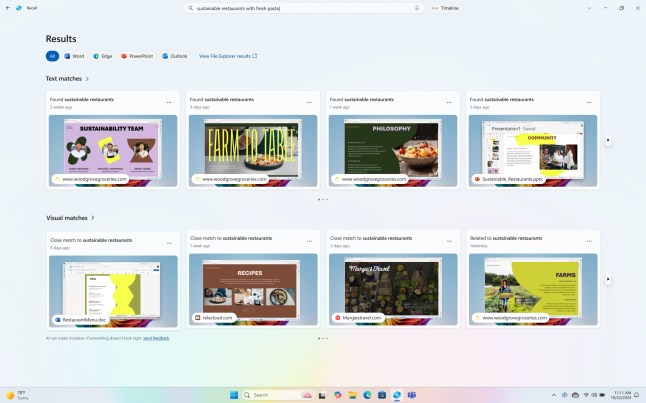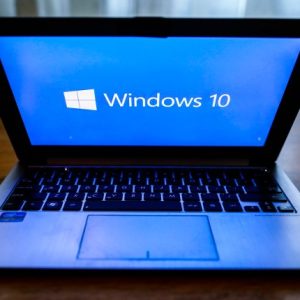
Are you keen for your computer to automatically screenshot what you’re doing every few seconds, creating a database of every conversation you had, photo you received or website you visited – even at 3am?
Some users of Windows apparently are, and will be using the controversial AI-powered ‘Recall’ tool that Microsoft is rolling out.
The feature has a rocky history, and was withdrawn last year after a backlash over how ‘creepy’ it was.
Since then, the company has made some changes. The feature is now opt-in, and it can be paused.
But while this may be reassuring for the individual running it, it doesn’t help those they communicate with, who may not have consented to their messages being screenshot for AI analysis.
Promoting the feature, which will be available on their Copilot+ PCs, Microsoft said it would allow users to ‘retrace their steps’.
Perhaps mindful of the backlast last year, the feature is rolling out gradually and is still in ‘preview’ mode for now.
Would you find this helpful?
- Yes, it would organise my activity
- No, it's way too creepy
But Jake Hurfurt, from Big Brother Watch, told Metro in a statement: ‘Constant screenshots can still be a threat to privacy, despite Microsoft’s welcome efforts to make the tool opt-in and enhance protections.
‘Users might now have more control over the screenshots that are taken, but anyone they interact with whether by email or even on encrypted apps with disappearing messages like Signal could have their data captured and stored without their consent.
‘Anyone turning on this feature must be very careful not just to protect their own privacy, but the privacy of others as well.’
Announcing the updated tool in a blog last week, Microsoft said: ‘With the AI capabilities of Copilot+ PCs, it’s now possible to quickly find and get back to any app, website, image, or document just by describing its content.
‘As you use your Copilot+ PC throughout the day working on documents or presentations, taking video calls, and context switching across activities, Recall will take regular snapshots and help you find things faster and easier.’

Isn’t this all in your browser History anyway?
Most of it, yeah.
But it would probably be more difficult to find, especially if you are someone who always has dozens of tabs open.
An example Microsoft gave is: ‘Maybe you wanted to make that pizza recipe you saw earlier today but you don’t remember where you saw it. Typing thin crust pizza into the search box would easily find the recipe again. You could also search for pizza if you didn’t remember the specific type of pizza.’
The tool will also catalogue your ‘history’ outside of the internet, like if you see something fascinating in your chats, photos or maybe bank account.

What protections are there for users?
In certain browsers, the revamped Recall lets users specify a list of webpages or apps they don’t want to be catalogued, such as online banking.
Microsoft has also sought to improve the security of where the screenshots are stored, and users will now need to use Windows Hello biometric information or PIN security to access them.
Users will also be able to decide how long screenshots should be stored for before they are automatically deleted.

The biggest change is that users are no longer forced to have it working, and will be asked for permission before snapshots are saved.
However, it will be switched on by default as long as permission is obtained, rather than something users need to actively seek out.
What are the concerns?
They relate to two general issues.
The first is privacy. While we can already take screenshots of what we see on our desktops, the ability to automatically do so, regardless of the content, amplifies the risk to others.
The other concern is security for the person whose information is being stored.
If accessed by criminals, it would present a trove of data of potentially highly sensitive information, including passwords, bank details, and health issues.
The search function could no doubt be helpful for the kinds of people who have thousands of unread emails and a chaotic desktop of scattered icons (ahem).
And there are already similar AI-powered searches available in photo apps, for example, to retrieve something using a description.
We’ll have to wait and see if the changes made are enough to make the tool feel more ‘helpful personal assistant’ and less Black Mirror.
Get in touch with our news team by emailing us at webnews@metro.co.uk.
For more stories like this, check our news page.








